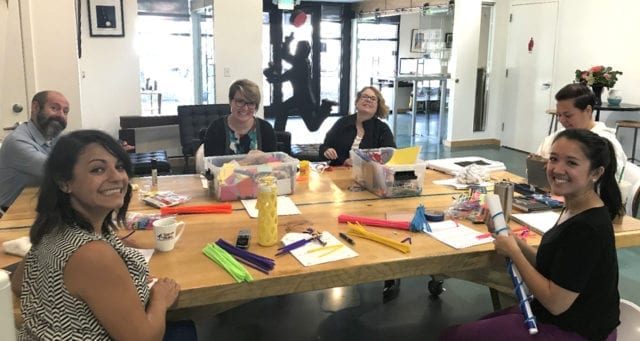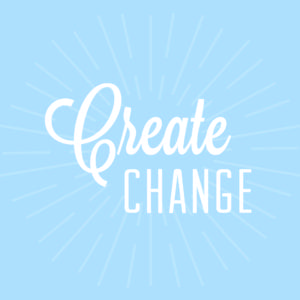
Our tagline, “Designs for Social Change,” defines how we work as a studio. Not only do we make a point of working with non-profit organizations, donating our time, and resources, but we also make every single project we work on a “social change” project.
To create social change in everything we do, we use our secret weapon: Human Centered Design. Human Centered Design starts with the people you’re designing for and ends with a “new solution tailor made for their needs.” Through three key steps: inspiration, ideation, and implementation, we are able to start with a big problem, and create lasting solutions. In short, these three steps go as follows:
Inspiration:
Collecting research, interviews, and ideas. No idea is too small or too big!
Ideation:
Synthesizing all our research into a constructible idea. We do this by setting a design challenge in the form of a “How might we______” question. Then, we get to work creating a prototype! 
Implementation:
With our prototype ready, we get to testing, creating, designing, and proofing. Once finished, we have our design solution ready to go.
As an “agency,” using Human Centered Design allows us to identify with clear, defined precision exactly what kind of messaging our target audience would most identify with.
You can use a Strengths, Weaknesses, Opportunities and Threats analysis from your social media analytics, or even just Google to try and learn how to talk to your target audience—but, nothing beats empathy. If you can figure out how to use empathy when thinking about, designing, and publishing work for your target audience, you will never miscommunicate. In fact, they might starting talking back to you!
Identify what your target audience is interested in, how their lives are impacted, and how your design challenge might directly affect them. Put yourself in their shoes: would you really care if someone was showing you a new app? How about if that app solved a problem for you. You would be more interested in solving your problem than downloading a new app, right?
 Designing for social change is designing for people. And at Uptown Studios? We LOVE people.
Designing for social change is designing for people. And at Uptown Studios? We LOVE people.
Working together on the Human Centered Design process is one of our staff’s favorite things! It has changed the entire way we approach creating marketing campaigns, websites, newsletters, and logos for our clients. This past month, we recruited all of our staff for a recertification course, check out some of the workshops we did to sharpen our skills!
Interested in working with us on Human Centered Design? Holler at us!
Blog



